From the camera obscura to the first Kodak, photography has come a long way in the past few centuries — but when were cameras invented exactly?

Wikimedia CommonsAn illustration depicting the daguerreotype process, one of the earliest forms of photography.
Today, cameras aren’t just commonplace; they’re nearly impossible to avoid. Nearly every person on the street carries in their pocket a smartphone with a camera capable of capturing incredibly high-resolution images in the blink of an eye. Social media has made the presence of photography a daily fixture in the lives of hundreds of millions of people across the globe. It’s often difficult to remember that things weren’t always this way. But exactly when were cameras invented?
Cameras are a relatively modern luxury. Just 10 years ago, smartphone cameras were leagues behind their more expensive DSLR counterparts. And as we go back further, the gap between the camera of a professional photographer and the average person only grows. Go back far enough, of course, and you’ll find that most people didn’t own a camera at all.
We may take the ability to snap a photo at any moment for granted now, but once upon a time, this idea would have been unfathomable. From the earliest days of the camera obscura to the first Kodak, this is the story behind the first camera ever made and the invention of photography.
Camera Obscura, The Precursor To Photographic Cameras
When were cameras invented? It’s hard to pinpoint an exact date, but the journey of the photographic camera begins with the camera obscura. Not a camera in the traditional sense, the term “camera obscura” comes from the Latin term for “dark room.” It more closely resembles a projector.
In its simplest form, a camera obscura is a darkened room with a tiny, pinpoint hole cut into one side, occasionally with a lens in it. From the exterior of the room, light is shined through the hole, projecting an image against the opposite wall.
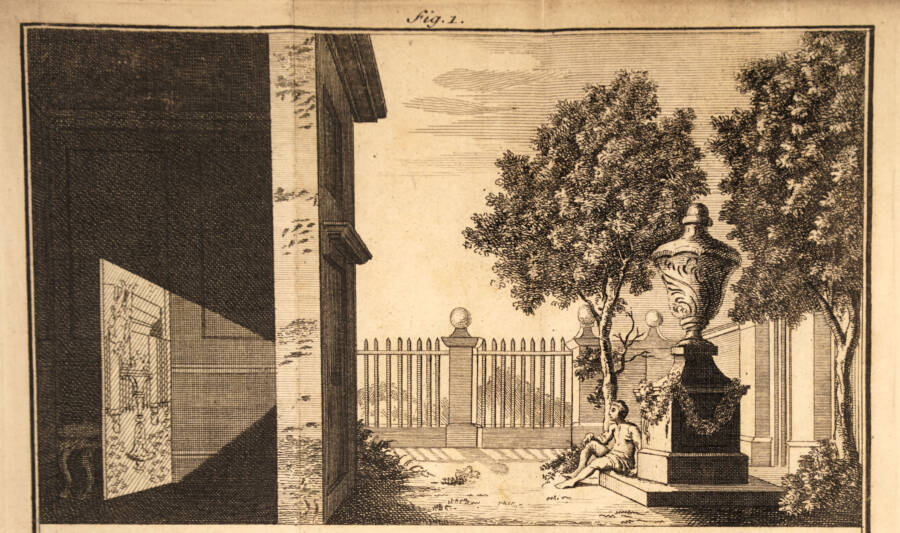
Wikimedia CommonsAn illustration demonstrating how the camera obscura works.
According to the English Science and Media Museum, this technique has been used in some form since at least the 4th century B.C.E. in China. It was also described in Iraqi scientist Ibn al-Haytham’s Book of Optics between 1011 and 1021 C.E.
Leonardo da Vinci wrote of a similar device during the 15th century, and by the 17th century, portable versions of the camera obscura began to circulate. They were primarily used by artists to practice their sketching.
By the 19th century, the camera obscura existed primarily in three forms: a full-sized, darkened room; a portable tent and mirror used to produce an image on a desk within the tent; and a small, portable box that displayed an image on translucent paper.
It was this latter version of the camera obscura that ultimately led to the development of the earliest photographic cameras.
When Was Photography Invented?
As the camera obscura was rising to prominence, scientists around the world were conducting a variety of experiments on any number of different subjects. This included Johann Heinrich Schulze, who took an interest in studying various salts and their reactions to light — which ultimately led to the invention of photography.
What Schulze’s experiments found was that salts darkened purely due to the influence of light. That is, neither heat nor exposure to air had any impact — only light.
Half a century later, in 1777, the Swedish chemist Carl Wilhelm Scheele found that silver chloride was one of the most susceptible salts to darkening due to light exposure. This led to further experimentation by one of photography’s earliest pioneers, Thomas Wedgwood, who managed to create images by placing items on silver nitrate-coated ceramic pots and exposing them to light. The end result was not permanent, but it represented one of the earliest attempts at creating imagery using a silver solution.
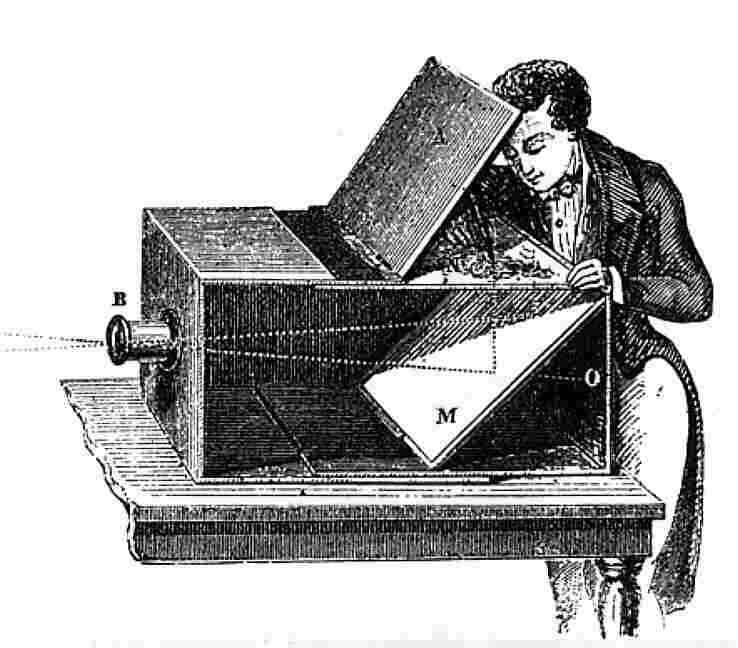
Wikimedia CommonsAn artist using the small box version of the camera obscura.
It wasn’t until 1826, however, that the invention of photography became official when the first permanent image was created by Joseph Nicéphore Niépce.
Who Invented The Camera?
Per the Nashville Film Institute, most historians agree that while the invention of the camera was ultimately the result of years of innovations, the first photographs printed on silver chloride-lined paper were created by the Frenchman Joseph Nicéphore Niépce. In fact, one of his photographs from 1826 is the oldest extant photograph on record.
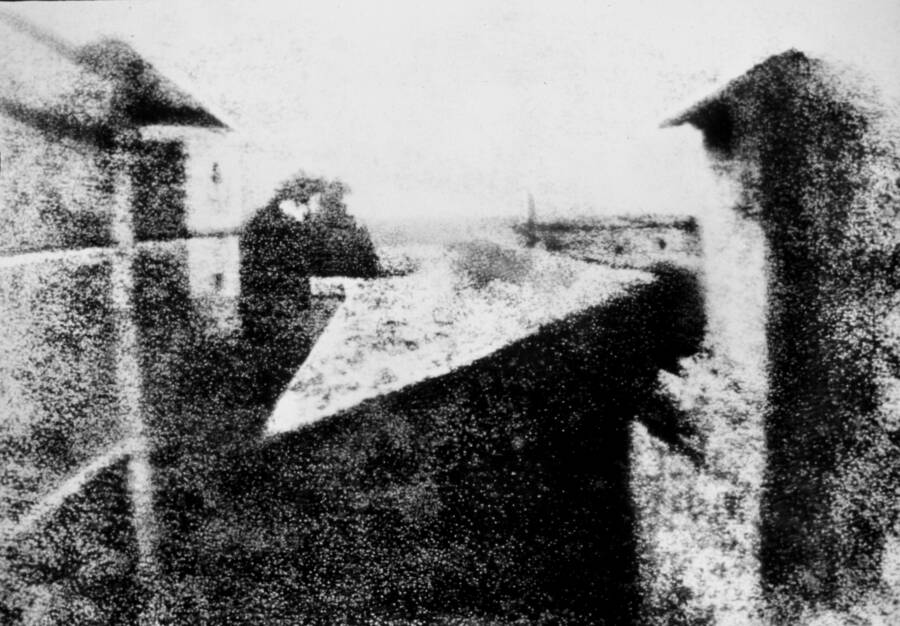
Wikimedia CommonsView from the Window at Le Gras, the earliest surviving photograph.
Many consider Niépce to be the man who invented the camera. In 1816, he created a device that he described in a letter to his brother as “a kind of artificial eye, simply a little box, each side six inches square; which will be fitted with a tube that can be lengthened and carrying a lenticular glass.”
Niépce would eventually go on to collaborate with the inventor Louis-Jacques-Mandé Daguerre, with whom he would conduct further experiments in photography. In 1829, Daguerre revealed a new type of camera, one that improved upon the design of the portable camera obscura.
His device utilized a copper plate covered in silver, sensitized with iodine, and then exposed to hot mercury in order to capture an image. These images came to be known as daguerreotypes, named after the man who invented the process.
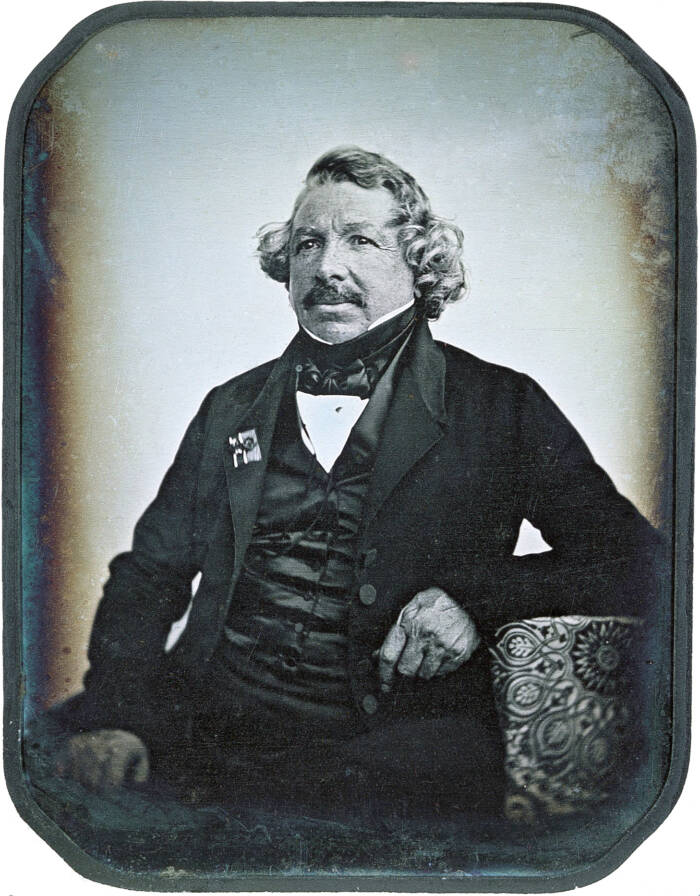
Wikimedia CommonsA dageurreotype photograph of Louis Dagguere.
Niépce died in 1833, putting an end to his partnership with Daguerre, but by then, news of this more modern photographic camera had spread far and wide. Around the same time, the English scientist William Henry Fox Talbot had been developing another method of capturing photographs using silver salts, and in January 1839, he published a pamphlet with the title Some Account of the Art of Photographic Drawing, the first published analysis of photography as an art form.
Then, Talbot changed the landscape of photography forever.
Calotypes, The First Cameras To Use Negative Printing
In 1841, Talbot revealed his own method for capturing photographs: the calotype. In some ways, this was seen as an improvement to the daguerreotype process, and it effectively created a photographic negative rather than just a single print of a photo.
This allowed for multiple positives to be printed from one negative using either calotype paper or Talbot’s silver chloride — or “salted” — paper, which was fairly cheap and effectively pioneered latent image development.
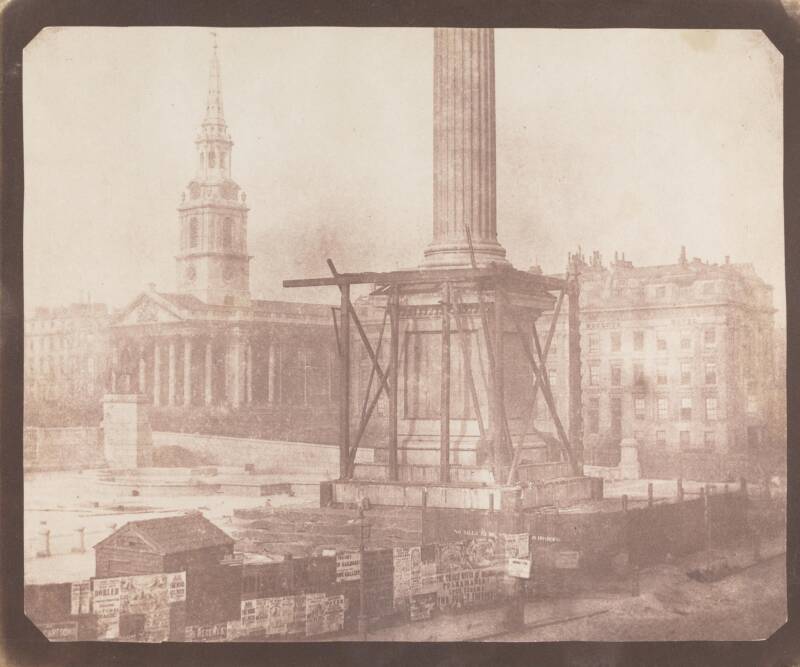
Wikimedia CommonsThe Building of Nelson’s Column, by William Henry Fox Talbot.
Although calotypes laid the groundwork for the negative/positive process still used by modern photographers, these cameras never reached the popularity of the daguerreotype, and when it came time for commercial photographic cameras to enter production, the daguerreotype served as the basis.
The First Commercial Photographic Camera
In 1839 — before Talbot had even debuted his calotypes — Niépce’s son and Daguerre sold the rights to the daguerreotype and the heliograph to the French government. In return, they received annuities for life.
That same year, Alphonse Giroux signed a deal with the two men to mass-produce daguerreotype cameras, selling them with accessories for 400 francs.
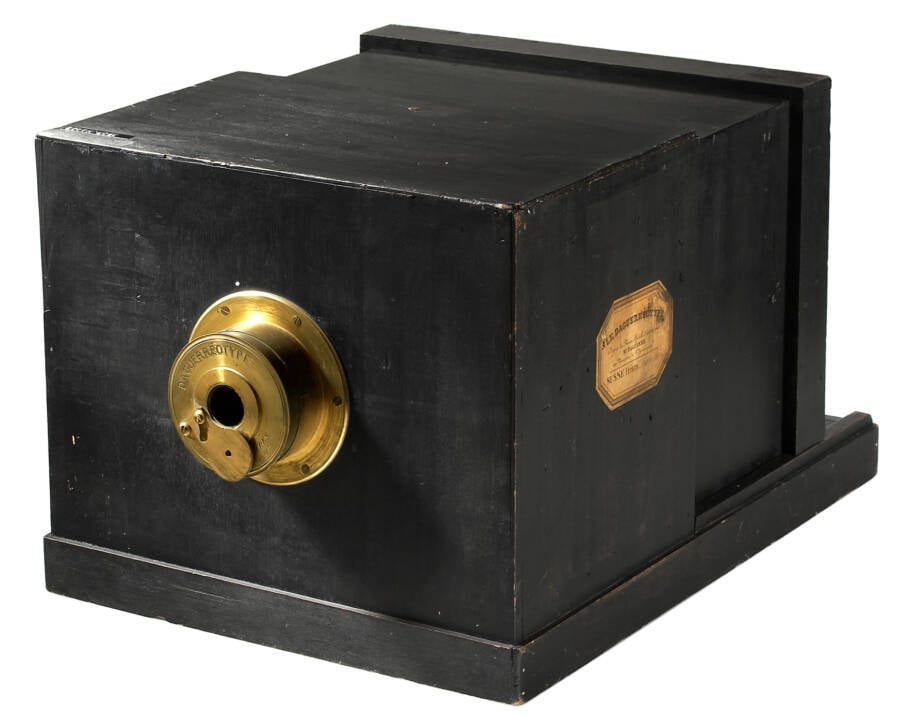
Wikimedia CommonsThe Giroux daguerreotype camera.
While these cameras marked the first time the average person could get their hands on a camera, they were still a far cry from more modern photographic cameras. For starters, these early daguerreotypes had incredibly long exposure times, taking anywhere from five to 30 minutes to produce a single image. This is, in part, why so few people smiled in photographs — holding a smile for half an hour could be quite painful.
Still, the daguerreotypes were a massive success, and versions of them entered markets across the world. The German inventor Peter Friedrich Voigtländer created a conical, all-metal version of the camera within just a few years of Giroux’s original production, and many innovations from other makers brought the exposure time per image down to just three minutes.
Small changes continued to be made over the years, but perhaps the most influential next step in photography came in 1888 when George Eastman debuted the first successful roll-film hand camera — the Kodak.
The First Kodak Camera
George Eastman, a former bank clerk from Rochester, New York, created and marketed the Kodak camera in 1888, forever changing the landscape of amateur photography. The initial design was a small, simple box pre-loaded with a 100-exposure roll of film. Once the roll was used up, the entire camera had to be sent back to the Kodak factory in Rochester, where it was loaded with a new roll of film while Kodak employees developed the used roll.
While the design of the camera was itself an innovation, its widespread popularity can largely be attributed to Eastman’s genius marketing. According to the Metropolitan Museum of Art, within a decade of the Kodak’s introduction, an estimated 1.5 million Kodak roll-film cameras were in the hands of amateur photographers.

Wikimedia CommonsThe Kodak No. 2 Brownie Box camera, circa 1920, an updated and improved version of the original Kodak camera.
Eastman introduced an updated version of the Kodak roll-film camera in 1900, dubbing it the Brownie, which proved to be even more popular than the original and remained a fixture well into the 1960s.
Since then, incremental changes and innovations in technology have made cameras sharper, clearer, and able to produce incredibly high-resolution images in a matter of seconds. Today, this technology is available to billions of people worldwide, and though we may take it for granted, it’s truly remarkable to see just how far the field of photography has come in such a relatively short period.
After learning about when cameras were invented, read all about who invented the toilet. Then, learn about the creation of the telegraph and how it changed communication forever.





